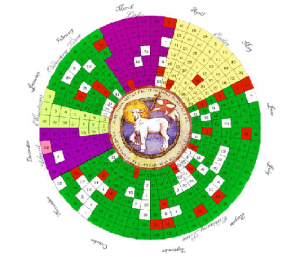 The season of Advent began this weekend. At our Masses we noticed the colors on the altar and on our priests were changed to purple. We saw that the Advent wreath was once again on the altar, the first candle lit signifying that we have indeed started a new season in the Church. But what does all this mean anyway? Why does the Church begin its New Year before the start of the Gregorian calendar New Year? Why not just start the Church’s New Year on January 1st?
The season of Advent began this weekend. At our Masses we noticed the colors on the altar and on our priests were changed to purple. We saw that the Advent wreath was once again on the altar, the first candle lit signifying that we have indeed started a new season in the Church. But what does all this mean anyway? Why does the Church begin its New Year before the start of the Gregorian calendar New Year? Why not just start the Church’s New Year on January 1st?
The answer lies in the fact that the Church is not worried about the months of the year or about nature’s seasons. Instead, She concerns herself with making sure that we, as followers of Christ, are able to make the journey through the mysteries of Jesus’ life beginning with the waiting period before His birth, a season that we call Advent, all the way through His death and Resurrection to the crowning of Him as King on the last Sunday of Ordinary Time. The Second Vatican Council stated: “Within the cycle of a year, the Church unfolds the whole mystery of Christ, from his incarnation and birth until his ascension, the day of Pentecost, and the expectation of blessed hope and of the Lord’s return.” (Constitution on the Liturgy, #102).
The Liturgical Year, as we call the Church year, is divided into six separate seasons. They are as follows: Advent, Christmas, Ordinary Time, Lent, Easter, and Ordinary Time. Each season is special and important all on its own, however, each season builds on the one prior to it. The Liturgical Year takes us on a journey through Jesus’ birth, life and death. Let’s take a closer look at each season.
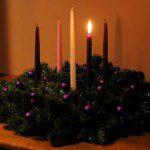
Advent: The season of waiting. Advent comes from the Latin word “adventus” which means arrival or coming. We are waiting to commemorate Christ’s birth. Advent begins on the fourth Sunday preceding Christmas day nearest to or falling on November 30th and lasts until Christmas Eve. During this time we experience a season of penitence but also one of joyful anticipation for Christ’s arrival into the world. The four weeks of Advent are often marked by the use of an Advent wreath with four candles reflecting the themes of faith, hope, joy, and love. The color we see in Mass and on our priests is violet or purple. Purple is used to remind us of sacrifice and penitence. Pink is used on the 3rd Sunday of Advent to signify the joy we have that our wait for Christ’s birth is almost over.
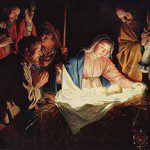
Christmas: The season of rejoicing and celebration. During Christmas Jesus becomes incarnate. He chooses to come to us in human form as a baby borne of his mother Mary. Christmas begins at Vespers on the evening of December 24th and lasts until the Baptism of Our Lord which is celebrated on the Sunday following January 6th. The Christmas season is marked by joy and gratitude. The color we see at the Mass and on our priests is white. White signifies both purity and rejoicing. Christ is here! Alleluia!
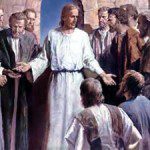
Ordinary Time: The season that’s “not so ordinary”. Ordinary Time brings to mind a time that’s not “extraordinary”, but if we think this we are very wrong. Ordinary Time in the Church is a season where we focus on the “not so ordinary” events that happened during Jesus’ day to day life. During Ordinary Time we experience Christ’s priestly ministry on earth. We read of His miracles, we hear His teachings; we follow him through His childhood and into His founding of the Church on earth. Ordinary Time is divided into two sections, one beginning after Christmas and the other beginning after Easter. This particular season of Ordinary Time begins on January 14th and lasts until the 9th Sunday preceding Easter. On our altars and our priests we see the color green. The green represents the hope of new life.

Lent: The season of penance. Lent is a somber time in our faith. We are remembering Jesus’ 40 days in the desert and preparing for His death on the cross. We focus on prayer, fasting, and almsgiving. Lent is a time where we are called to repent and make lasting changes in our lives to bring us closer to God. Lent begins on Ash Wednesday, 6 weeks before Easter, and ends right before the Mass on the Easter Vigil, the night prior to Easter. Traditionally we celebrate 40 days of Lent, not counting the Sundays during the season as Sundays are always a celebration of Christ’s resurrection and our redemption. During Lent we see purple or violet on our altars and our priests. Again this color represents sacrifice and penitence. Like in Advent, halfway through Lent, we see pink introduce as a sign that there is still hope. Hope that Christ will win His battle against death and will rise in glory. Hope that Easter will soon be here.
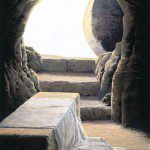
Easter: The season of hope and rejoicing. Easter is a glorious time in our faith. We know the joy of the Resurrection and salvation that Christ has secured for us. It is a time of new beginnings. It is a time of thanksgiving for Jesus’ triumph over death. Easter begins at the Easter Vigil and ends 50 days later at Pentecost. During the Easter season we also celebrate Divine Mercy Sunday and the Ascension. Between the Ascension and Pentecost we prepare ourselves for the coming of the Holy Spirit. During the Easter season our altars and priests are clothed in white or gold. Again, these colors signify purity, new life, and rejoicing. However, on Pentecost we see the color red as a symbol of the tongues of fire given by the Holy Spirit that descended upon the Apostles.
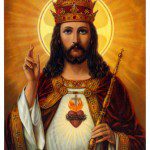
Ordinary Time: The season that again is “not so ordinary”. The second period of Ordinary Time begins the Monday following Pentecost and ends the night before Advent begins. The last Sunday of Ordinary Time is the Feast of Christ the King. During this second period of Ordinary Time we also celebrate many other important feasts within our faith: Trinity Sunday, Corpus Christi, The Sacred Heart of Jesus, The Assumption of Mary, All Saint’s Day, and All Souls Day (to name a few). The season is far from ordinary! This is the longest season within the Church’s liturgical year. At this time we once again see green on our altars and on our priests. The green symbolizes the hope of new life… the new life that Christ is offering to us, that He secured for us through His holy sacrifice on the cross.
There are various ways to celebrate each season of the Church’s Liturgical Year. One only has to look on the internet or ask a friend what they do to keep each season holy. To make the most out of this amazing Liturgical Year that the Church has given us we must first understand why we celebrate the way we do. Why is each of the seasons important? How can each season bring us closer to God? How can we keep the seasons holy? Our Church, guided by the Holy Spirit, has given us the map to grow closer to God, to understand Jesus’ great sacrifice, and to find our way to His loving arms. The Liturgical Year aids us in these goals. By following the Liturgical Year we take a journey through the mysteries of Christ’s life, we repent, we rejoice, and we grow in faith and closeness to God. What an amazing gift the Church has provided us.
Happy New Year! How do you plan to celebrate?
*you may find the above Liturgical calendar and many others at http://michelequigley.com/blog/printable-liturgical-calendar/
